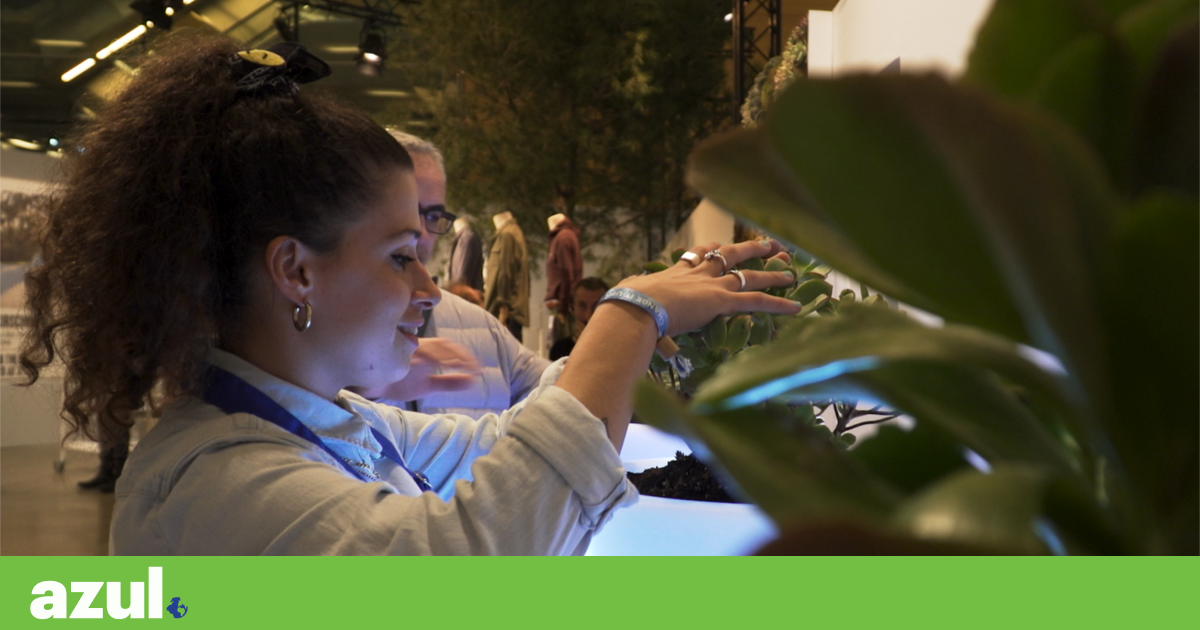A world in which factories produce and control electricity might seem like a concept out of a science fiction story, but that is exactly what happens at several of Bioo’s construction sites in the municipality of Viladecans, in Barcelona, Spain. eight years ago the start The Spanish company is developing and “burying” battery plates that attract microorganisms that feed on organic matter secreted by plants during photosynthesis. The goal is to take advantage of the electrons they release which can be used to generate an electric current. The Bioo Batteries (Biobatteries) project was one of the commitments of the Horizon 2020 Program (currently, Horizon Europe), of the European Parliament.
In 2023, the electricity generated is far from being able to light a house (or even a room): only 15 watts are produced per day, per 225 square metres. in middleAccording to Deco Proteste, the dishwasher’s automatic program alone consumes kilowatt-hours per wash cycle (that’s 1,000 watt-hours). But that’s no reason to despise the technology: The Bioo team notes that the electricity produced is enough to power the lamps and small sensors that monitor the humidity and temperature of the potting soil. The microorganisms used also release hydrogen molecules that generate water molecules with the oxygen in the air.
“There are projects where we have already been able to save almost 50% on irrigation costs,” notes the 27-year-old founder and CEO of Bioo, Pablo Vidarte, in conversation with PÚBLICO. This is not meant to compete with other energy sources, such as solar panels. But he insists on saving money.” For Vidrate, technology is key.
The team is currently working with BayerCrop, a division of German pharmaceutical company Bayer focused on agricultural development. The company’s technology already covers four hectares of the Biotechnological Botanical Garden in Ibiza, where it is tested with different plants in different climates (Mediterranean, desert and forest).
the biography
At international technology fairs, such as the Mobile World Congress, in Barcelona, it is always the company’s gardens, which feed lights and small equipment, that attract the most attention.
decades behind the race
Although not talking about the idea of using organic ingredients (from soil, from plants, from human cells) For electricity generation is far from unprecedented. People have been working on biological batteries for decades. There are already such batteries in use in waste management systems. What we do differently is produce bio-batteries outdoors,” admits Vidarte, who says the idea for Bioo came to him during a futuristic dream in the middle of his degree in Multimedia Engineering, at Ramón Lull University, in Barcelona. “It is an origin. clichehe admits. But when I started reading about it, I realized it wasn’t impossible. This is a topic that has been worked on a lot since the 1970s.”
Even earlier, in 1911, he published a scientific article in the academic journal Royal Publishing Society I already realized that electricity can be harnessed from yeast yeast (yeast used in the process of making bread and beer). Decades later, in 2007, the Japanese technology company Sony foot A series of bio batteries that can power small devices such as mp3 players. However, the idea did not go beyond the company’s prototypes. It’s a common scenario in the world of biobatteries.
Actual use cases are rare. A review of the literature on bioaccumulators, attached to the roots of plants, published in 2019 in the academic journal Renewable and sustainable energyHe notes that the biggest problem is the scarcity of the amount of electricity produced. Some types of biobatteries can also lead to plant death.
“With Bioo batteries there is no impact on the plant,” Vidarte defends. We work with SMFC [sigla em inglês para pilhas de alimentação vegetal ligadas ao solo], which means that the batteries and plants are separate. Only microorganisms and materials that are drawn naturally through irrigation to the lower layers we use,” he continues. The materials used to build the batteries are all Biodegradable. “Our plates are the perfect hotel for microorganisms.”
the biography
As for the amount of energy produced, Vidarte says it’s crucial to change focus. With technology developed by Bioo, farmers can monitor the land over the long term without having to replace the batteries that power the sensors.
Other types of biobatteries may avoid the need to replace medical implants. That’s what German mace By exploring ways to feed wearable (wearable technology), implants and sensors through batteries that collect small amounts of energy from hundreds of thousands of cells.
“The mission of biobatteries is to show that nature can be used to produce electricity without harming it,” Vidarte sums up.
In addition to batteries, the company has begun to develop antennas that allow plants in flower beds to act as switches and control lights or musical equipment. One of the company’s strategies was to generate enthusiasm among the masses. It’s easy to see the effect of a light bulb that lights up when you touch the leaves or stem of a succulent plant. The system relies on placing an antenna in the ground that is activated when plants detect a change in frequency, which is converted into voltage due to human touch.
Fedarti insists, “With the switches, we show that it is possible to establish coexistence with plants and nature. We are not selling a product that generates a lot of energy, but a solution that makes green areas economically efficient.”

“Coffee trailblazer. Social media ninja. Unapologetic web guru. Friendly music fan. Alcohol fanatic.”

